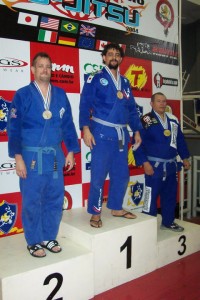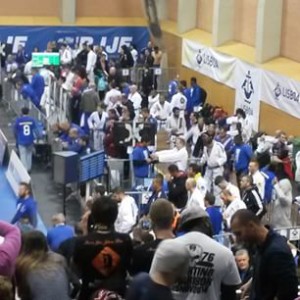What is the Pikal Jab? Essentially, it is closed fist strike that is very similar to the attack line when you properly throw a straight line jabbing strike with a knife with the blade held in the “pikal” grip (where the blade point is projected from the bottom of the grip. The strike, while not unique to the Filipino Martial Art style of Pekiti-Tersia, is heavily used in that system, and it is where Craig Douglas (aka Southnarc) did much of his knife training. And even though I had seen it and used it for decades from my previous FMA training, Craig is the one who really taught me and made me understand the tiny details of its proper execution. He is also the one who with I started throwing around the concept of an empty hand version that could actually work in a real environment, and could be taught without years of study.
So after many months of heavy, intense work, I have a few observations.
The punch works, and works well. It is very useful, and with the right coaching, it does not take too long to develop into a solid tool.
I think one of the reasons it works so well is that you are using the strike to move, so that you are using a high percentage and safe move to enable the movement, rather than the typical method of moving and then striking. It is safer and easier for a less experienced person to use. Provided they throw the strike correctly in the first place.
It is absolutely a knuckle punch. The trajectory of the strike is a straight punch, so the knuckles are the intended tool. Now, if you step out correctly and get the angle that we are trying for, there is a good chance that you will actually land it as a hammerfist, but that is an outgrowth of the correct directional move, not the strike itself. If you try to throw it as a hammerfist, I guarantee one of two things will happen. You will either throw it as an angled strike, which will open up a counter straight punch, and will NOT camouflage your intentions, or you throw it in a weird semi-straight way and you will not be able to get offline to the outside angle. Either results in a failure of the entire point of the strike. If you attempt to replicate the exact line of the knife in hand version, you will make impact with the bottom of your fist with the wrist cocked at a particularly weak angle. With a piece of hard steel in front of it, it is no big deal. Without that little bit of extra “oomph” though, it is a big deal trying to make impact that way. Either the blow will be severely weakened, or you will do enough damage to your hand that further follow-ups (including going to weapons) will be extremely problematic. We had a lot of issues early on before I got OCD about making sure it is a linear knuckle punch. The directional change happens because your shoulders rotate around the axis of that linear strike. And being linear, you are much more covered and protected from a counter punch should it fail, or if your opponent has superior attributes.
I can predict that some people will attempt to crowbar their own pre-set belief into this technique. A person with a boxing-type background may very well try to minimize the shoulder rotation and upper body opening, because that part is so contrary to their base. In doing so, the ability to step to that long Positional Dominance angle will be retarded. A person with a FMA background could try to insist that it does not have to be launched as a boxing punch and try to hijack the knife movement more directly, but that would be a complete misunderstanding of the differences in what can happen when someone is punched versus what will happen when someone is stabbed with a long, pointy, metal thing. Someone with another MA style (non-boxing) may try to change the launch of the punch as well. Sorry, it does not work. I have a student with an exceptionally strong Okinawan Karate background (he actually regularly travels to Japan and Okinawa to compete and train) and when he first learned this, you could see him visualize it as a hammerfist or backfist. I let him go a couple of weeks hoping he would see the light. Not only could he not get the angle, he was repeatedly countered punch and smashed in the face over and over. Until I showed him why it was not working for him, he was frustrated. Once he put aside his own prejudices, it worked for him.
It needs to be understood that this is hybridized technique that is contextually driven and tactically specific. The pikal jab is neither “this” nor “that”. It is its own thing that works where it is intended in the manner it is intended. I am not saying this is the final word on the technique, but if someone wants to argue about it, they better put in some actual work. I have months of diligent training with multiple people (anywhere from 4-8 per night) for multiple hours per week in that time to arrive at these conclusions/observations.


